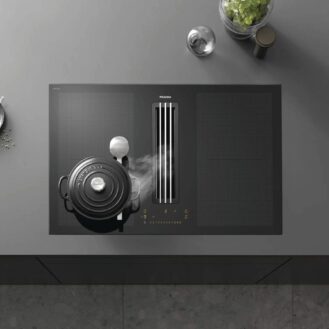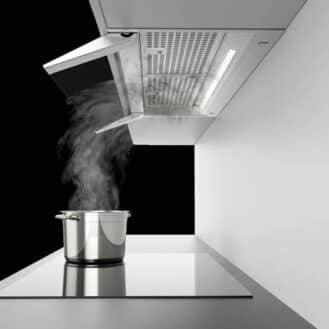This guide will look at the main types of residential ovens available on the market to help you choose the right one for your kitchen.

This guide will look at the main types of residential ovens available on the market to help you choose the right one for your kitchen.
When choosing an oven, there are a number of criteria to consider such as the type, capacity and installation. The choice of gas or electric may depend on your preference or the installations already available in the home. While those who cook regularly might be prepared to invest in an oven with advanced features, occasional cooks might prefer simplicity.
Key criteria to consider when buying an oven:
Electric ovens are the most common type on the market, offering several advantages over gas ovens:
While gas ovens are now less common than electric ovens, they still have a few advantages:
One drawback of gas ovens is that they tend to have hotspots. To help regulate this problem, either turn food regularly or choose a fan assisted model to circulate the heat more evenly. Other drawbacks of gas ovens include: limited choice, higher initial price and the need for a gas connection.
The type of oven you choose can have a big impact on moisture levels and the texture of the food, so it is important to think about the dishes you will use the oven to cook.
Conventional ovens heat the food with a stationary heating source such as radiating heating elements or a gas flame. While the air may circulate a little through natural convection, heat is often not distributed evenly, which may cause hotspots. Conventional ovens may be preferred to convection ovens when cooking cakes or pastries to stop them drying out or the exterior cooking too quickly.
One the most popular in home kitchens is the convection oven (or fan assisted oven). The fan circulates hot air for quicker and more even cooking. This is advantageous for dishes that require a crisp exterior, but not ideal for pastries that need to retain moisture. Many convection ovens have a setting without a fan, so that they can also work as conventional ovens.
Steam ovens are still rare in domestic kitchens and have a higher starting price than convection ovens, but their popularity is increasing because they outperform standard ovens in a number of ways. For example, they cook food faster and preserve nutrients and flavors better, making them ideal for healthy dishes. They also require less oil for cooking and are better than microwaves for reheating or defrosting. Steam ovens work by injecting steam into the chamber during cooking. The two main types are those that are connected to an existing water supply, and standalone models which have a refillable water reserve. While conventional steam ovens do not have a way to roast or crisp meals, new combi-steam ovens do, by combining the steam with a convection oven and/or broiler.
Microwave ovens cook food using microwaves that excite molecules in the food to produce heat. Microwave ovens are often smaller than standard ovens as they are generally used for reheating or cooking small meals in addition to a regular oven. While they tend to be cheaper, easier to clean and cook dishes quicker than conventional ovens, they have a number of disadvantages. They tend to heat up food unevenly and are not adapted to voluminous dishes or big quantities of food. Moreover, basic microwaves are not able to roast or brown foods. For those with limited space, a combi microwave oven may be the best solution.
Many home ovens are multi functional allowing one to cook in a variety of ways. As well as the combi steam and microwave ovens, other multifunction ovens include a grill (aka broiler), rôtisserie functions and meal presets.
Type of oven:
The main types of installations are built-in ovens, which can either be suitable for a tall kitchen unit or under-counter. There are also some countertop options available. While many built-in ovens come in standard sizes, it is important to check the dimensions of the oven to ensure that it will fit in the space available. If you intend to buy a gas or steam oven, make sure that your kitchen has the required connections.
Standard sizes can vary depending on the country or continent the oven is designed for. For example, in the EU, many built-in ovens are designed to fit into standard kitchen units at 60cm wide and maximum 60cm deep.
| Typical EU oven heights | |
| Compact oven | 45cm |
| Standard single ovens | 60cm |
| Double ovens | 70 – 90cm |
| Under-counter double ovens | up to 75cm |
If you don’t have kitchen units designed to accomodate a built-in oven, or you have limited space, a countertop oven may be the best option. Alternatively, if you have a spacious kitchen, you may want to consider a range cooker, which incorporates the oven(s) and a cooktop in a single unit.
While many standard ovens have an enamelled finish to facilitate cleaning, self-cleaning ovens can save you time:
There are a number of new oven technologies and trends on the market to make cooking easier and more enjoyable. Here are a few:



Once you’ve verified your fuel options, measure your kitchen and the space designated for your new appliances. Look for installation instructions on the range, cooktop or wall oven you’re interested in for exact cutout measurements to ensure a perfect fit.